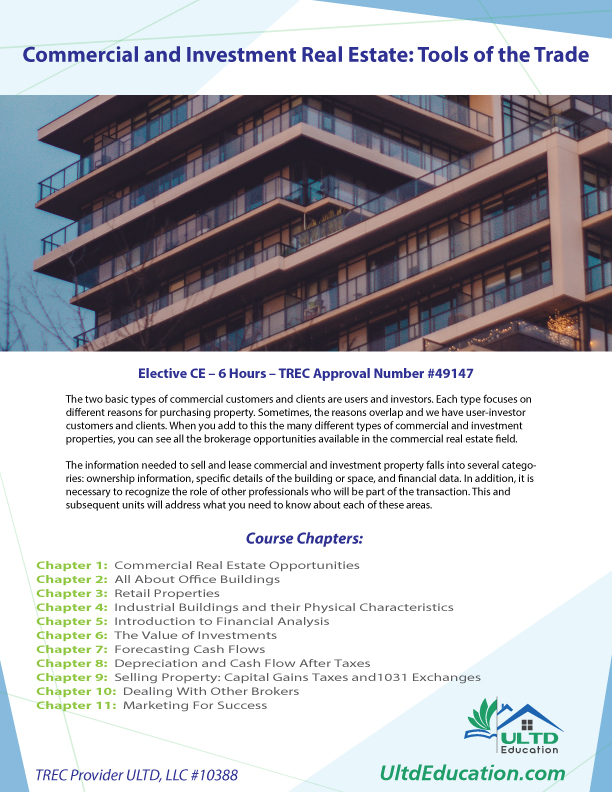CE – 6 Hours – TREC Approval #35262-RECE
Written by Edward S. Smith Jr.
The two basic types of commercial customers and clients are users and investors. Each type focuses on different reasons for purchasing property.
Sometimes, the reasons overlap and we have user-investor customers and clients. When you add to this the many different types of commercial
and investment properties, you can see all the brokerage opportunities available in the commercial real estate field.
The information needed to sell and lease commercial and investment property falls into several categories: ownership information, specific details of the building or space, and financial data. In addition, it is necessary to recognize the role of other professionals who will be part of the transaction. This and subsequent units will address what you need to know about each of these areas.
The 6-Hour Course will Cover:
Chapter 1: Commercial Real Estate Opportunities
Chapter 2: All About Office Buildings
Chapter 3: Retail Properties
Chapter 4: Industrial Buildings and their Physical Characteristics
Chapter 5: Introduction to Financial Analysis
Chapter 6: The Value of Investments
Chapter 7: Forecasting Cash Flows
Chapter 8: Depreciation and Cash Flow After Taxes
Chapter 9: Selling Property: Capital Gains Taxes and1031 Exchanges
Chapter 10: Dealing With Other Brokers
Chapter 11: Marketing For Success
